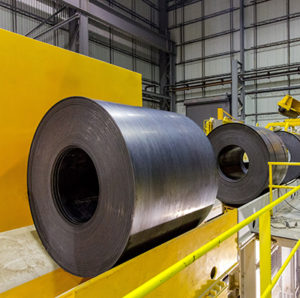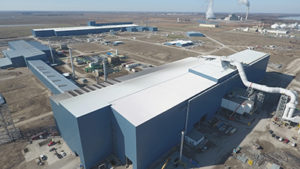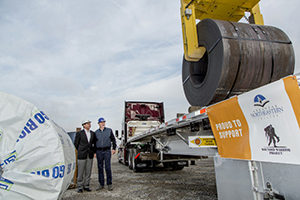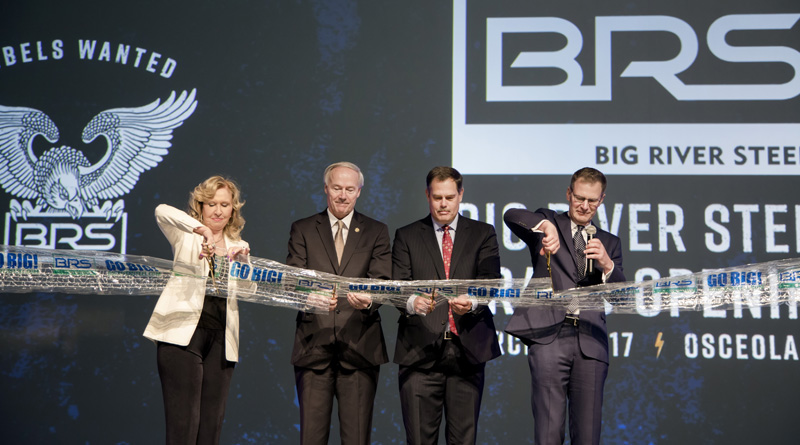Big River Steel Mill is First Steel Production Facility to be LEED-Certified
By Rachel Leber

OSCEOLA, Ark. — Big River Steel Mill in Osceola announced at its grand opening ceremony on March 1 that it had achieved LEED certification on Feb. 27. In receiving this certification from the USGBC, Big River Steel is now officially the first steel production facility to be LEED-certified due to its environmental sustainability efforts and energy-efficiency performance. Working with the environmental and energy consultants at Emerald Built Environments in Cleveland, Ohio, throughout the build process kept sustainability at the forefront of priorities.
Big River Steel’s building process was quite unique, according to Laura Steinbrink, president of Emerald Built Environments, as there was no architect or general contractor on the project. Instead, the entire building was designed and built by engineering firm Charlie Victor Engineering (CVE) out of Pittsburgh, who specializes in steel mills, with Schueck Steel in Little Rock and Utah-based Cache Valley Electric in Salt Lake City and Associated Brigham Contractors in Brigham City, Utah as the primary contractors on site, along with a number of other construction companies. Leading the charge on making the campus environmentally sustainable was David Stickler, chief executive officer of Big River Steel.

The most important feature of the new steel mill building that contributed to earning LEED status was the Big River Steel’s new steel mill model, called the Flex Mill, and the energy savings that come from its specific steelmaking process. The Flex Mill uses a unique steelmaking process by integrating the traditional model of steel mill with a new type of mill called a mini-mill, according to Steinbrink. These mini-mills make high outputs of steel by melting down scrap metal and can produce the quality and quantity of the traditional mill but with much better efficiency — both environmentally and financially. Big River Steel’s energy model results (determined by cost savings) exceeded the 10 percent threshold that USGBC requires to gain credit in this area of operations and production, according to Steinbrink.
The budget for the entire project was $1.3 billion, and the building itself is a frame of structural steel, steel panels and concrete. Thirty-percent of the building’s materials were made of recycled content, and 35 percent of building materials were extracted, harvested and manufactured within 500 miles of the plant, which won Big River Steel more points with LEED, in addition to the use of low-emitting adhesives, paints, sealants and flooring used on site, according to Steinbrink. In addition to gaining base-level LEED status on the new mill building, Big River Steel attained gold-level status on its employee services building and base-level LEED status for its warehouse.

For the entire campus, Big River Steel gained LEED points for a treating 100 percent of its stormwater on site and then reusing it in the steelmaking process. Wastewater is treated on site and then released back into the Mississippi River. LEED rewards projects that use strategies to avoid heat island effect, so instead of paving outdoor walkways and roads, Big River Steel used gravel roads as an effort to achieve this.
The company’s site is 1,108 acres, and 23 of those acres are made up of wetlands — with two of those acres being newly added by the company to make up for what was lost in the construction process, as well as adding almost six acres of newly planted trees. The company is preserving 50 percent of the site area to be protected against future development. The stormwater retention ponds represent 59.7 acres of the site’s property.
“Respecting the environment and safeguarding the welfare of our team members while building a profitable enterprise is at the core of what it means to be a Flex Mill. As more steel consumers look to source from steel producers that not only recycle but also do so with a focus on sustainability, Big River Steel will be well positioned,” said Stickler in a statement.

